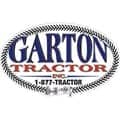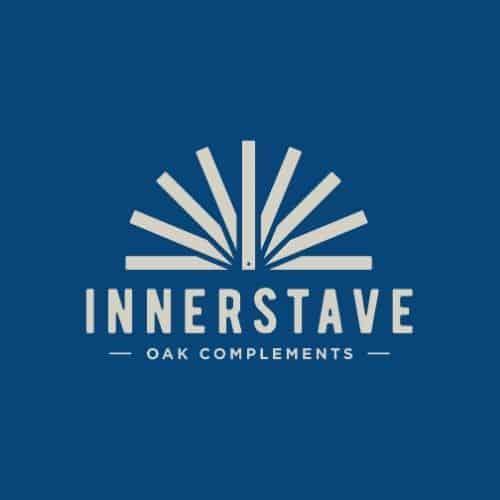Some things never change.
“You won’t find much change since you were last here,” offered John Poor Jr. when I phoned to make an appointment for an interview. He is one of four generations who live on the Poor family ranch in Hopland. The last time I made the beautiful drive through the foothills dotted with sheep and oak trees up past the University of California field station was in 1999. I was researching an article on old vine Zinfandel.
The old Zinfandel near the house was recently replanted except for a sentimental thick trunked head pruned glorious vine. Two of the old vineyards are still producing. The scion for the new vines is from the original planting,” says John Robert Jr. That’s not surprising. This ranch epitomizes the value and resourcefulness that comes with using and reusing what is on the land, fixing the old to make it keep working and living life centered around family.
Relatives trace the family back to the 1600s when the first Poors came to America from England. Of the 13 subsequent generations, six have lived on this 180- acre ranch adjacent to the Hopland Pomo Reservation since 1888.
As I step out of my car on a Saturday morning, I am met by John Robert Poor, Jr., 55. and his vivacious wife Susan. The 100-plus year old olive tree planted by John Robert’s grandfather I remembered from the last visit loomed overhead. We walked around the old homestead to check out the 90-year-old caper bush last seen in the summer now in winter dormancy.
The family patriarch John Robert Poor, Sr., 86, holds court in his kitchen in the old house his grandfather built with square nails. He was born here in 1923 and is known as Big John for his six-foot–four inch height or Grandpa.
His grandson (John Robert Jr. and Susan’s son) John Samuel Poor, 29, joins us with his children. John Samuel Poor Jr., also known as John or Tiny John is almost three. He is the fourth generation named John Poor currently living on the ranch. His sister Kenzy, an alert happy nine month old, sits on her dad’s knee taking it all in. They and mom Kim live on the ranch. His brother Steven, who works at the UC Agricultural Field Station down the road, lives nearby with his wife Heidi, who also helps at harvest and their daughter two-year old Nicole and eight month old son Leto.
“Most of the family is within three miles,” says John Robert Sr. That includes his daughter Kathleen and her family and the mother of his children, his ex-wife who with her husband live in a house John Sr. built a few feet away from the family homestead. Another daughter Willa lives in Hopland and daughter Karen lives in Arizona.
In the 1880s, John Sr.’s grandfather John Samuel Poor. was a glass cutter in Springfield, Massachusetts, when he decided to head west. “Grandfather brought his wife, three year old son (John Robert Sr.’s father George) and a daughter to homestead the 160 acres above the Sanel Valley. He planted 30 different grape varietals including ten acres of Zinfandel. Over the years he and then George added almond, fig, olive and chestnut trees as well as the caper bush.
A vegetable garden continues to be planted at the ranch since those early days. The Poors use the same seed corn his grandfather first planted. Everything in the old days was done on these hilly slopes and ridges by horse until 1942, when the family got its first tractor. That tractor has been joined by several others over the years but the ’42 International is still the favorite of John Robert Sr. “That tractor has loaded 10,000 tons of grapes,” he recounts.
“John Robert Senior’s dad George made really good wine,” says Susan. “We still have the old wine barrels in one of the sheds on the property. He made such good wine that he traded it to the linemen, who were stringing electrical lines over the mountain to add a connection so they could have electricity at the ranch.”
John Robert Sr. loves this memory. “At one in the morning we quietly flipped on the switch when no one else around us had electricity. Got it for a jug of wine,” he grins. Ten years ago Susan was in Safeway in Ukiah when she happened to meet one of the old line men. He told her that he and his coworkers “flipped a coin” to see who would walk the line by the Poor Ranch so they could stop by for a glass of wine with George.
George was so renowned for his wine he even paid his pruners with it. According to John Robert Sr. George set a jug of wine at the end of a row. When the pruners finished that row, George set it at the next row. “They worked all day for a glass of wine,” he laughs. “Dad had to give up winemaking because it encouraged too much company,” says John Robert Sr.
“This ranch has provided a living but with nothing extra,” says John Jr. He says that during the Depression it was hard to sell grapes. His grandfather and dad loaded them on the train to go east but by the time they paid the freight bill they made no money.
“Mom saved the ranch by working as a teacher,” he recalls. Elizabeth had graduated from college in the Bay Area in 1918. She took a job as the teacher at the Indian School in McDowell Valley to help make ends meet. John Robert Sr. stayed with her during the week and attended the Indian school during the third and fourth grade in 1932 and 1933. His dad built the road between the reservation and home so they could go back and forth. George Poor died at 93 in 1978.
“I’ve moved twice in my life,” smiles John Robert Sr. When he got married he moved a few feet away to the house where John Robert Jr. and Susan now live. While growing up on this ranch, except for the two years that he stayed with his mom at the Indian school, he walked all the way to Hopland to school.
“I have 17 great-grandchildren and one on the way,” says John Robert Sr. who lost his left leg to a blood clot last year. Being wheel chair bound hasn’t slowed him down much. Although it has interfered with his favorite job this time of the year, pruning.
All the pruning is done these days by John Robert Jr. and John Samuel. Susan helps depending on weather conditions. They begin long pruning in some vineyards in October right after harvest. Long pruning gives them seven days of frost protection. On March first they prune the remaining vineyards and keep going until April 15.
When it comes to planting and harvesting everyone chips in including Steven and Heidi and Aunts Willa and Kathleen. Karen takes time off from her job as a realtor and flies in every year to work hard as a leaf picker at harvest. Even Tiny John is already helping out. He carries the vines when they are planting and when it’s time for harvest, “I eat the grapes,” he says enthusiastically.
“Almost everything here we bought second hand,” says John Robert Jr. whose expertise on the ranch is as mechanic, electrician and plumber. Patriarch John Robert Sr. is the carpenter as well as electrician and plumber. John Samuel and Tiny John like to garden. “John loves the tomatoes,” says his grandmother Susan, who refers to herself as the “parts runner.”
Susan grew up in Santa Rosa. “Grandpa” calls her the “city girl.” She says he was always pulling her leg in the early years. She remembers vividly the time he sent her after a “left hand” shovel. “I looked and looked at the shovels in the barn,” she says sheepishly and finally just grabbed one. “It took me 30 years to quit falling for his teasing,” she laughs. She likes to paint in oil and pastels, mostly landscapes and especially vineyards. Her work was accepted to be shown at the State Fair in Sacramento last year.
At harvest the Poors contract Lenny Castro to manage the picking crew. “They come every year and really know the vineyards,” says John Jr. “They do a fantastic job.”
Grapes are planted from 1500 to 2000 feet elevation on southwest facing steep slopes and ridges. Most of the grapes were replanted in the 1930s and ‘40s when John Robert Sr. was in high school. His dad George grew over 30 varietals in the beginning but the family has now narrowed it down to Carignane, Zinfandel, Grenache and Syrah with Petite Sirah on a plot within the Hopland Reservation.
The largest block of grapes is nine acres and the smallest is one acre. They dot the ridges and are three miles apart “as the crow flies.” Dry farmed with no chemicals “we were certified organic in one year,” says John Jr. Their grapes go to Fetzer Vineyards. The Poors work with Ann Thrupp and Bob Blue from Fetzer and Bonterra.
“John Poor’s connection to Mendocino’s pioneer roots is rare,” says Blue, Bonterra’s winemaker, adding, “The Poors are truly original sustainable and heritage organic grape growers.”
Each of the Poor households runs independently. John Robert Sr. still cooks his own dinners and has a fourwheeler to get around the ranch. And yet they are also interdependent and committed to the hard work that farming this beautiful ranch entails. In addition to the grapes they run some cattle. The family gets together for holidays and each takes pleasure in the success of the other. Their family and grape growing history emanates from and hasn’t strayed far from the pioneer spirit of their forefathers.
















































